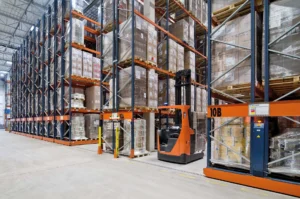Introduction
In the realm of evidence management, the choice of storage containers holds profound implications for the integrity of crucial information. The meticulous selection of appropriate evidence storage containers is a cornerstone of preserving the chain of custody and ensuring the credibility of evidence in legal proceedings. In this article, we navigate the considerations and key factors involved in choosing the right evidence storage containers to safeguard the sanctity of evidence.
Factors to Consider When Choosing Evidence Storage Containers
Material and Composition
The materials from which evidence storage containers are crafted play a pivotal role in maintaining evidence integrity. Containers should be constructed from materials that prevent contamination, chemical reactions, or degradation of the evidence. For instance, plastic containers are often suitable for a range of evidence types, while glass containers are preferred for evidence sensitive to light exposure. Metallic containers might be employed for evidence susceptible to moisture.
Size and Capacity
Selecting the appropriate container size is a balancing act. Containers should offer enough space to securely hold the evidence without overcrowding, which could lead to unintended interactions or damage. However, overly large containers could lead to unnecessary movement within the container itself. The capacity should be aligned with the nature and quantity of the evidence being stored.
Security Features
Security is paramount in evidence storage. Containers should feature tamper-evident seals and mechanisms that prevent unauthorized access. Locking mechanisms, whether manual or electronic, enhance security by restricting access to authorized personnel only. Unique identifiers for each container help maintain a clear record of the evidence’s movement and history.
Sealing and Labeling Mechanisms
Proper sealing and labeling mechanisms are crucial in evidence storage containers. Tamper-evident adhesive seals and specialized evidence tape provide visual indicators of any unauthorized attempts at access. Clear and accurate labeling ensures that each container is linked to the corresponding documentation, facilitating easy tracking and retrieval.
Environmental Considerations
Environmental factors can significantly impact the preservation of evidence. Evidence containers should be chosen with the environmental conditions in mind. For example, evidence sensitive to fluctuations in temperature might require climate-controlled containers. Proper protection against humidity, light exposure, and other adverse conditions ensures evidence remains unaltered.
Types of Evidence Storage Containers
Biological and DNA Evidence
Biological and DNA evidence require specialized containers to prevent contamination and degradation. These containers are often designed to resist temperature variations and prevent moisture accumulation. They maintain a stable environment that preserves the integrity of biological samples and genetic material.
Chemical and Hazardous Materials
When dealing with hazardous materials or substances, evidence storage containers need to offer robust containment. These containers are engineered to prevent leakage and contamination. Safety protocols should also be in place for handling and storing such evidence.
Digital and Electronic Evidence
Digital evidence, such as electronic devices, requires unique storage solutions to prevent data corruption and unauthorized access. Anti-static bags protect electronic components from electrostatic discharge, while faraday bags shield devices from electromagnetic interference and hacking attempts.
Conclusion
The meticulous selection of storage containers is not a mere procedural formality but a critical element in preserving the chain of custody. By carefully considering factors such as materials, security features, and environmental conditions, public safety professionals can ensure that evidence remains untainted, accountable, and admissible in legal proceedings. The right choice of containers upholds the integrity of evidence, bolstering the foundation of justice.
FAQs
1. Are there regulations that dictate the type of containers to be used for evidence storage?
Yes, various regulatory bodies and legal guidelines often provide specific requirements for evidence storage containers. These regulations are in place to ensure the integrity and admissibility of evidence in court proceedings. Public safety agencies should be familiar with these regulations and ensure that their chosen containers comply with the established standards.
2. Can evidence storage containers be reused for different cases?
Reusing evidence storage containers can be a viable option, but it requires careful consideration. Cross-contamination between different cases must be avoided to maintain the integrity of evidence. Thorough cleaning, decontamination procedures, and proper documentation are essential before reusing containers for different cases.
3. Is it necessary to document the specific container used for each piece of evidence?
Absolutely. Documenting the specific container used for each piece of evidence is a crucial aspect of maintaining the chain of custody. Proper documentation includes details such as container type, unique identifiers, and any seals or locks applied. This documentation provides a clear record of the evidence’s journey, from collection to presentation in court.
4. What security measures should evidence storage containers have against tampering?
Evidence storage containers should have a multi-layered approach to security against tampering. Tamper-evident seals provide a visual indication of any attempts at unauthorized access. Locking mechanisms, whether manual or electronic, prevent unauthorized entry. Additionally, using containers with unique identifiers and implementing access controls enhance security by tracking who accessed the evidence and when.
5. How do I ensure evidence integrity in challenging storage environments?
Challenging storage environments, such as extreme temperatures or hazardous conditions, demand specialized evidence storage solutions. Containers designed to withstand such conditions are equipped with features like insulation, climate control, and airtight seals. Ensuring that evidence is stored in an environment that aligns with its specific requirements is crucial for maintaining its integrity.
6. Are there specific guidelines for storing evidence with digital components?
Yes, evidence containing digital components requires unique considerations. Anti-static bags are commonly used to store electronic devices, protecting them from electrostatic discharge. Faraday bags are employed to shield devices from electromagnetic interference, preserving digital evidence integrity. It’s important to prevent data alteration or corruption during storage.






